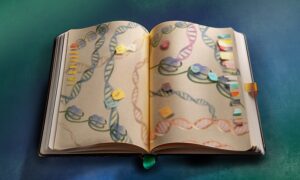
Read the latest Issue
Thanks to a new method developed by the Schultz lab at EMBL, scientists can use light to direct where cancer cells go

An airplane leaving a lit-up runway is not the kind of image you’d expect to see on the cover of a scientific journal, but there it is on this month’s issue of Cell Chemical Biology. Inspired by a study from Carsten Schultz’s lab, the image draws on the idea of using light to direct movement. Schultz and colleagues developed a new way to switch on a lipid called LPA, which many cells – including cancer cells – are known to move towards. The scientists manipulated this molecule so that it only becomes active when they shine a light on it. With this new method, researchers can make cells move towards a particular place, by flipping a switch.
Schultz and colleagues made LPA inactive by attaching a molecular ‘cage’ to each LPA molecule. When the scientists shine light on this cage, it opens, releasing LPA. “What we did was we took a spot in between several cells, and every 40 seconds we shone a little bit of light onto this spot, which released a little bit of that lipid,” Schultz explains. “And because it’s always the same spot, over time it generates a little gradient – the concentration of LPA is a little bit higher where we release it, and then diffuses away and reaches cells in the vicinity. The cells sense that lipid, and they start migrating towards it.”
The study was conducted in collaboration with Kees Jalink’s lab at The Netherlands Cancer Institute. For cancer researchers like Jalink, the great advantage of the technique is that it is much less cumbersome than attempting to manually add the molecule to the exact same spot on a lab dish. Like lighting on a runway guiding aircraft to the right spot, the approach could eventually enable scientists to extract cancer cells from tissues or organoids, for further analysis.
Looking for past print editions of EMBLetc.? Browse our archive, going back 20 years.
EMBLetc. archive